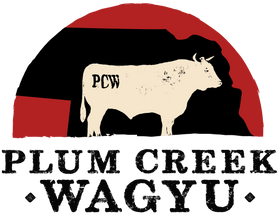The Wagyu Mythbusters: Separating Fact from Fiction
Introduction
Wagyu beef is surrounded by myths and misconceptions, from its origins to its grading and health benefits. Many believe that all Wagyu comes from Japan or that it's always exorbitantly priced. In this post, we’ll debunk the biggest Wagyu myths and set the record straight.
1. Myth: All Wagyu Beef Comes from Japan
Fact: While authentic Wagyu originated in Japan, high-quality Wagyu is also raised in the U.S., Australia, and other countries. American Wagyu, for instance, comes from Japanese Wagyu cattle crossbred with traditional American breeds, creating a unique but equally rich flavor profile.
2. Myth: Wagyu is Always Expensive
Fact: While A5 Japanese Wagyu can be costly, there are more affordable cuts and grades available. American Wagyu and different Wagyu hybrid cuts offer incredible quality at a lower price point, making it more accessible to a wider range of consumers.
3. Myth: More Marbling Means Better Wagyu
Fact: Marbling is a key characteristic of Wagyu, but higher marbling doesn’t always mean better taste. Some diners prefer slightly less marbled cuts for a more balanced texture and beefy flavor. The best cut depends on personal preference.
4. Myth: Wagyu is Unhealthy Due to Its Fat Content
Fact: Wagyu contains a high percentage of monounsaturated fats and omega-3s, which can be beneficial for heart health when consumed in moderation. Its unique fat composition makes it different from conventional beef.
5. Myth: You Must Cook Wagyu Like a Regular Steak
Fact: Wagyu’s high fat content means it requires different cooking techniques. Cooking it at lower temperatures and avoiding over-seasoning helps preserve its buttery texture and rich flavor.
6. Myth: Wagyu and Kobe Beef are the Same
Fact: Kobe beef is a specific type of Wagyu from the Hyogo Prefecture in Japan. While all Kobe is Wagyu, not all Wagyu is Kobe. The strict criteria for Kobe beef make it one of the most exclusive varieties in the world.
Conclusion
Understanding Wagyu beef beyond the myths helps consumers make informed choices. Whether you’re exploring different Wagyu origins or cooking it properly, knowing the facts ensures you get the best experience from this luxurious beef.
Related Posts
Why Local Matters: The Benefits of Buying Nebraska-Raised Wagyu
Plum Creek Wagyu Customer Spotlight: How Our Customers Enjoy Wagyu
At Plum Creek Wagyu, we take great pride in offering premium Wagyu beef that is loved by our community. But don’t just take our word for it—our customers are the real stars! From backyard BBQs to elegant dinner parties, our customers find creative ways to enjoy the rich, tender flavor of Wagyu beef. In this blog post, we’re excited to share a few of their stories and showcase how our beef becomes the centerpiece of their meals.
How to Store Wagyu Beef: Maximizing Freshness and Flavor
Wagyu beef is prized for its exceptional marbling, flavor, and tenderness. Proper storage is essential to maintain its premium quality. In this guide, we’ll explore the best practices for storing Wagyu beef, covering everything from refrigeration and freezing to safe thawing methods.
The Global Influence of Wagyu: Exploring International Flavors
Wagyu beef is renowned worldwide for its rich marbling, tenderness, and unique flavor. While it originated in Japan, its luxurious qualities have earned it a place in kitchens across the globe. As Wagyu continues to influence international cuisines, chefs and home cooks alike are experimenting with this premium beef in creative ways. In this blog post, we’ll explore how different cultures incorporate Wagyu beef into their dishes, highlighting diverse recipes that bring global flavors to this prized ingredient.
Pairing Wagyu Beef with Seasonal Produce: Winter Edition
Winter is a season of hearty flavors and comforting meals, making it the perfect time to pair the rich, buttery taste of Wagyu beef with the freshest seasonal produce. Here’s how to create unforgettable dishes that highlight the best of what winter has to offer.








